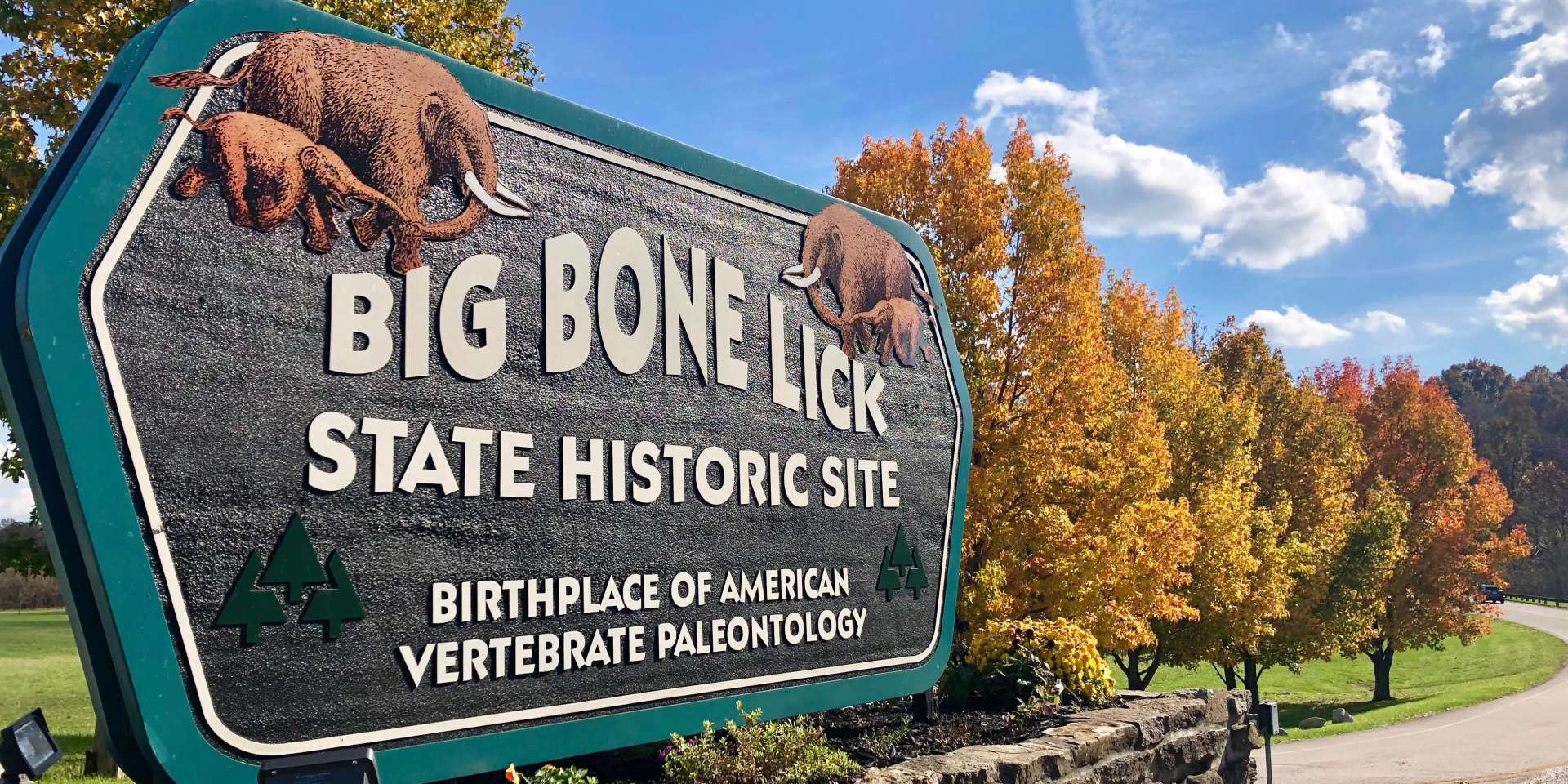Big Bone Lick State Historic Site
Big Bone Lick SHS is the birthplace of American vertebrate paleontology and aims to promote the understanding and appreciation of American vertebrate paleontology and the late Pleistocene (Ice Age). The Pleistocene, more commonly referred to as the Ice Age, began 1.8 million years ago and ended around 10,000 BC (12,000 years ago). The important part of the Pleistocene relating to Big Bone Lick spanned an 8,000 year period, from approximately 12,000 to 20,000 years ago. During this period, great ice sheets covered the North American continent in a jagged pattern just north of Cincinnati. Huge Ice Age mammals such as the American Mastodon and Harlan’s Ground Sloth traveled to the salt-sulfur springs to quench their thirst and lick the mineral-rich soil. Today these animals are extinct, but their bones remain preserved around the world.
The first recorded discovery of fossils at Big Bone Lick was made in 1739 by a French-Canadian soldier, Charles le Moyne, second Baron de Longueil. He was led to the site by Native Americans who had their own stories of Big Bone Lick. The Delaware Indians had a fascinating legend about the origins of the mammoth and mastodon bones at Big Bone Lick: “In ancient times a herd of these tremendous animals came to Big Bone Lick and began a universal destruction of the bears, deer, elks, buffaloes, and other animals which had been created for the use of the Indians: the Great Man above, looking down and seeing this, was so enraged that he seized his lightning, descended on the earth, seated himself on a neighboring mountain, on a rock of which his seat and the print of his feet are still to be seen, and hurled his bolts among them till the whole were slaughtered, except the big bull, who presenting his forehead to the shafts, shook them off as they fell; but missing at length, it wounded him in the side; wherein, springing round, he bounded over the Ohio, the Wabash, the Illinois, and finally over the great lakes, where he is living at this day.”
Many important historical figures became interested in Big Bone Lick's fossils and bones including famous Kentucky settler John Findley, explorer Colonel George Croghan, Benjamin Franklin, Thomas Jefferson, and Lewis & Clark. It was Jefferson who commissioned William Clark to return to Big Bone Lick in 1807 and collect bones in what was the first organized paleontological expedition in America. The bones, about 300 of them, Clark collected were sent back to the White House where Jefferson laid them out to be studied at his leisure. This organized dig established Big Bone Lick as the Birthplace of American Vertebrate Paleontology. At the park, you can explore places where mammoths and mastodons once walked the earth.
Big Bone Lick State Historic Site
(859) 384-3522
3380 Beaver Rd.
Union, KY 41091
Events
Every Weekend, May 29 - October 31, Fossil Hunters Program



